Keeping a fish tank or an aquarium is, no doubt, a pleasurable hobby and an exciting way to feel the beauty of nature at home.
With a bunch of colorful fish swimming around, it can be quite a mesmerizing sight and even pretty therapeutic.
But, keeping a fish tank in excellent condition and making your aquatic friends blissful requires more than just merely pouring tap water into the aquarium.
To keep your tank’s aquatic life active and healthy, you need to properly maintain a steady and carefully balanced ecosystem.
With a healthy and well-maintained aquatic ecosystem, your fish will have a legit chance to live, survive, and thrive in your aquarium for years, and not just in a few months.
Of course, there are a lot of things to consider when maintaining an aquarium and taking care of fish. And, one of the most important things to put into consideration is the water’s ideal pH level.
A lot of newbie aquarists spend a great deal of time and effort in maintaining the ideal temperature of their aquarium. But, little do they know, the role of the tank’s pH level is just as crucial as its water temperature.
And, if you are not sure how to raise or lower the pH in your aquarium, it can ultimately cause a great deal of stress for your aquatic pets.
Trust me, understanding this aspect of fish keeping as well as knowing how to lower pH in aquariums will create a more pleasant experience for you and your pets.
Searching for some tips on how to lower pH in aquariums? Need more information about pH levels? Gues what? You are definitely in for a specia treat today, as I have listed down the best ways to lower pH in aquariums.
Contents
What is pH, and What is its Role in Aquariums?
You may have remembered some conversations and discussions about pH levels from your science class during your high school days. If you cannot remember anything, the basics of pH for your aquarium water are pretty easy to relearn.
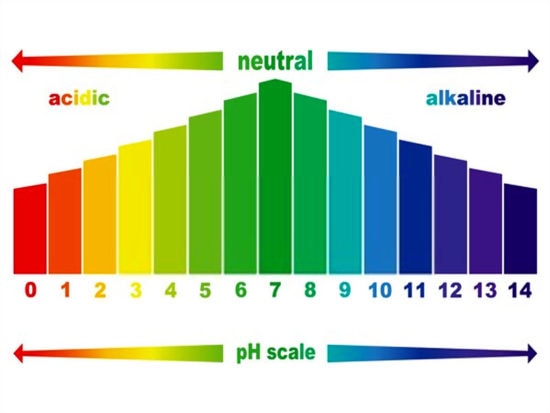
When it comes to maintaining or improving your aquarium’s water quality, pH is indeed a crucial factor.
The pH level, in the simplest way, can be explained by your aquarium’s acidity level. Your tank’s pH level can be optimal, high, or low for your finned pets.
- High pH: A high level of pH means a lower acidity level, and the tank’s water becomes more alkaline or less acidic.
- Low pH: A low pH, on a pH scale, means a higher acidity level, and the tank’s water becomes more acidic.
What is the Normal pH Level?
This can be a tricky concept. There is, technically, no real as a normal level of pH. It is all about the water’s optimal pH level, and it depends on the types of fish, plants, and other creatures in your aquarium.
The optimal level of pH, for most freshwater fish, is around 5.5 to 7.5. Still, you should do a little research on your finned pet before you decide what your tank’s optimal level of pH is.
Also, keep in mind that the level of pH is not precisely static, and it frequently changes over time. As a matter of fact, it might change in less than a day.
In natural water habitats, pH typically rises at daytime and drops during nighttime, due to photosynthesis and plant respiration.
The pH level may change when fish are removed or added since water is replaced or added, and the aquarium’s biological processes were also changed.
When is it Needed to Lower pH in Aquariums?
Aquarists want to lower pH in aquariums to maintain or improve the overall health of their aquatic living organisms.
Most aquarium plants and domesticated fish come from regions with narrow and stable parameters for water quality.
Amazon Swordplants, angelfish, barbs, tetras, and organisms from equatorial and tropical regions like Southeast Asia and Brazil flourish in acidic waters.
The lakes, rivers, and streams that these plants and fish hail from, typically, flow through flourishing forests that drop driftwood, sticks, and leaves that are rich in tannins.
Furthermore, the soil in these areas is rich in organic materials, such as humus and tannins.
And, these organic matters tend to push the water’s pH level towards acidity.
Although most captive-bred tank fish are not extremely picky, you will likely get better breeding behaviors and colors when you match their optimal pH levels.
How to Lower pH Levels in Aquariums
Done checking your aquarium’s pH and find it higher than the optimal level? Then, check out the tricks and ways that I have listed down below.
Proven and tested by fishkeeping experts, these techniques will help you reach the optimal pH level of your aquarium water and make it stay consistent.
Regular Partial Change of Water

One of the leading causes of a high pH level, in aquariums, is the high volumes of ammonia.
And, since leftover food and fish waste cause spike in your tank’s ammonia levels, you should get rid of them by performing a partial water change regularly.
Also, as you change the water, do not forget to clean the decorations and gravel to remove algae and debris.
A word of advice, do not replace the entire water tank or tear down the aquarium because it will destroy its biological balance, which can lead to a disaster.
Ideally, you should change around 10 to 15 percent of your tank’s water every week. For heavily-stocked tanks, bump it to 20 percent per week.
Upgrade Your Filtration System
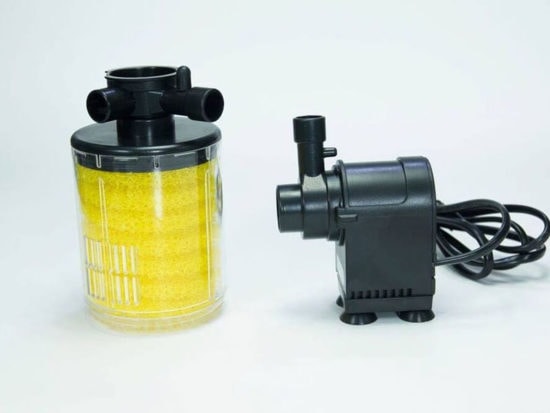
Your pH level can often increase because the tank’s filtration system is not powerful enough to effectively filter the volume of water your aquarium holds.
If, however, your filter performs excellently, and the pH level is still way high, try to add an additional filter or upgrade to a larger one.
Here is a cool and informative video about aquarium filters:
Add Driftwood to Your Aquarium

Adding some driftwood to your tank is, to me, the best way to naturally reduce the pH level of your fish tank.
It looks absolutely stunning! Plus, it provides a little cover for invertebrates and fish as well as creates attachment points for your aquatic plants. Not to mention, it creates tea-colored and acidic water for any river-style rainforest tank.
Tannin-rich and dense driftwoods, such as Mopani wood (Colophospermum mopane), are perfect and ideal.
Not only does it sink, but it functions as an acidic buffer as well, thanks to its slow and continuous release of tannins. Additionally, the wood’s microbial natural decay helps the aquarium water reach its optimal level.
Lighter wood options, such as cholla cacti, have minimal effects on your aquarium’s pH level. Sure, they minimize your tank’s pH level because their decay creates organics that are free-floating. But, they are nowhere as helpful and practical as the tree-based driftwood, which is denser.
On the low side, driftwood will cause a little discoloration, turning the tank water into brown or yellow. This discoloration, however, is not harmful to your aquatic plants or fish.
Here is a video tutorial that will teach you how to add driftwood to you fish tank:
A Bag of Peat Moss
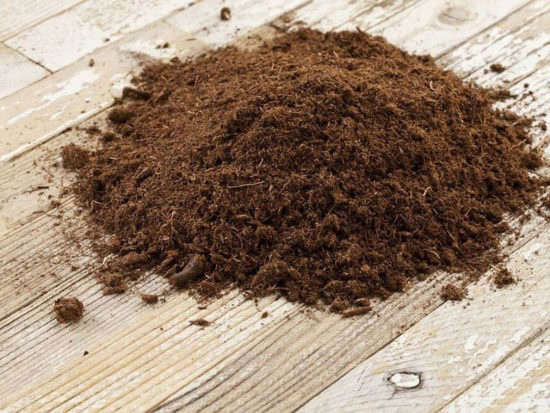
Adding some peat moss can do a lot of marvels for your aquarium and finned pets. Like driftwood, peat moss releases tannins into your aquarium’s water, helping reduce the level of pH.
Available readily in pet stores and online shops, peat moss comes in the form of pellets and chinks.
You can add it to your tank in a variety of ways. One of the most common ways to use peat moss is to add it directly to your tank’s filter. Alternatively, you may also put it in any spot within the aquarium.
Just remember, peat moss floats in aquariums, meaning it is ideal to keep it inside your tank’s filter rather than simply dropping it.
There is a little drawback to this solution, however. Peat moss, as with driftwood, will discolor your water.
To prevent water discoloration, leave the peat moss for a couple of days in a separate bucket before you submerge it to your fish tank.
Add Catappa Leaves
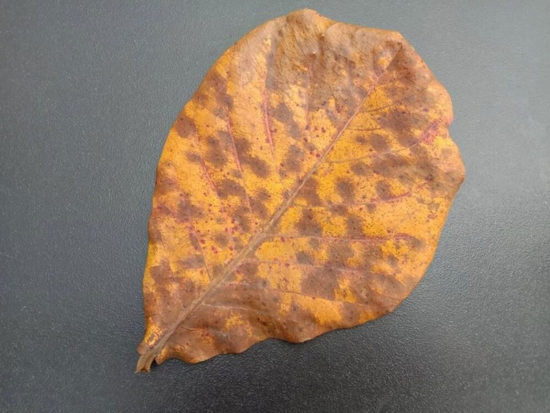
Terminalia catappa leaves, or also referred to as Indian Almond, are becoming quite popular in the world of aquarists these days. In established fish tanks, I prefer to use these leaves instead of peat moss.
These leaves work like peat and driftwood. As they decay, these leaves slowly release and infuse tannins into your tank water.
Even though they turn your water to brown, they can significantly buffer and lower your tank’s pH levels.
In my book, Indian Almonds leaves are a little more precise when it comes to measurement. A leaf for every 10 gallons of water is enough to cause a noticeable reduction in your tank’s acidity.
As a bonus, you will love the natural appearance of these leaves.
I prefer to put them in different locations around the tank.
Eventually, they will wander around, get caught in the water currents, and create natural sailboats for snails and small shrimp.
You may also put them within the aquarium filter, wherein these leaves will continuously release tannin without looking somewhat unsightly.
Use Chemicals
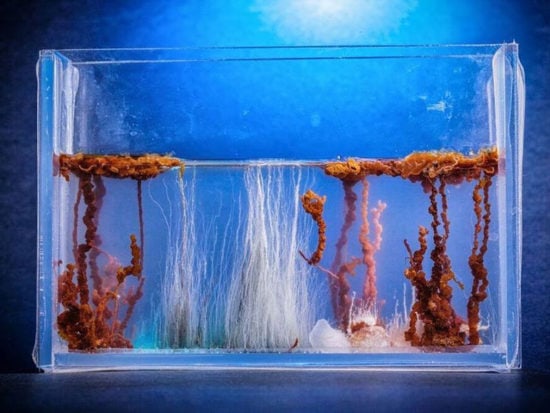
Although not highly recommended, some chemicals can safely lower your fish tank’s pH level. They are easy to use and can get the job done quickly.
But, the problem is, chemicals are often too strong for your fish. In fact, even a drop over the recommended or maximum limit can lead to a disaster.
Also, chemicals are unhealthy and may even lead to fish casualty. So, be extra careful when using this alternative to adjust your aquarium’s pH.
My advice is to use chemicals as your last resort when you have tried every other option available.
Add Vinegar to Your Aquarium
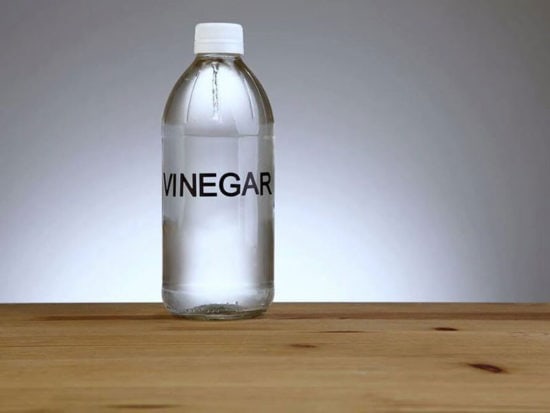
Believe it or not, vinegar can lower the pH level of your fish tank in a couple of ways. First, it instantly releases hydrogen ions into the aquarium using acetic acid.
Usually, this process is called ionization. A few hours later, the acetate will be metabolized by organisms like bacteria as they release carbon IV oxide as well as release some of the oxygen.
When using this technique, always use a trustworthy pH meter to measure and monitor the pH level of the water.
Adding excess vinegar to your aquarium will likely overshoot the level of pH as well as consume too much oxygen.
Reverse Osmosis
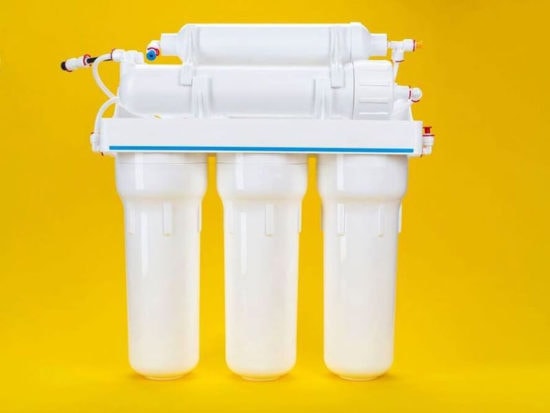
Reverse Osmosis, or also known as RO, is an artificial solution that removes almost all of the contaminants in the water. A powerful RO system filters out to 99% water contaminants, especially the ones that increase the water’s pH level.
Watch this video to learn more about measuring pH levels in aquariums:
And, while RO is formulated to filter out the harmful contaminants, it still lets the small ions pass through, ultimately making the water cleaner and healthier for fish.
The only downside to using Reverse Osmosis is that it often costs a lot of money.
Decrease the Tank’s Aeration
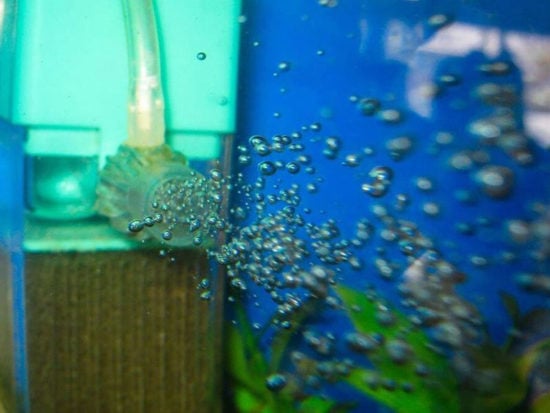
Looking for a simple, quick, and free way to lower pH in fish tanks? Then, you are going to love this fishkeeping hack.
When you reduce your tank’s oxygen level, you are virtually increasing the carbon dioxide levels, which eventually lower the level of pH.
Although it is cost-effective and rather easy, you should do it with extra care.
After all, your finned pets still need some oxygen to survive, meaning you should avoid lowering the level of oxygen too far.
The key to this solution is to get the balance right and do some regular tests.
Avoid Changing the Decorations and Substrate of Your Tank
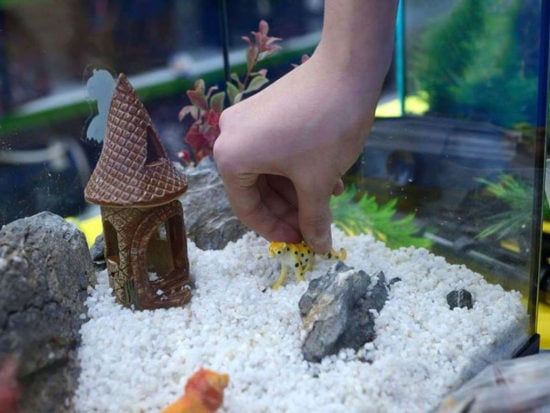
If you frequently redecorate your aquarium, then this could part of the reason your water does not have the optimal pH level. Every time you add something to your aquarium, you are changing the water’s condition and chemical makeup.
When changing the gravel of your aquarium, make sure that it is appropriate for your fish.
Crushed corals, for instance, may be eye-catching, but they are ideal for fish that need a lower level of pH. Truthfully, it can even harm your aquatic creatures.
There are also some aquarium decorations like rock and shell that can leak minerals or dyes into the aquarium. Not only will they raise the water’s pH level, but it can lead to toxic reactions that may be fatal for your fish.
There are a number of ways to lower pH levels in aquariums. To maintain the optimal pH level for your aquarium, always use a dependable and superior quality pH meter.
